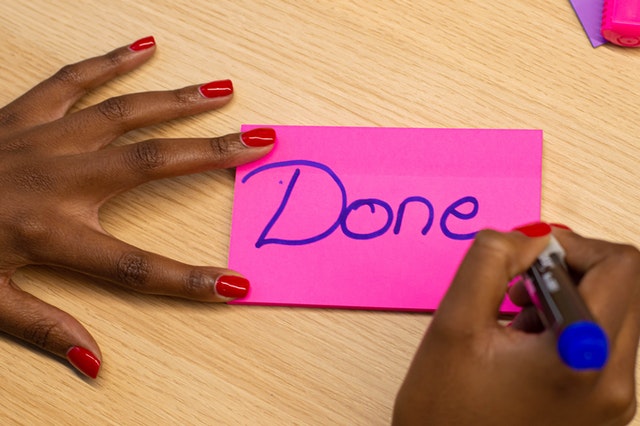Last month we talked about the Getting Things Done (GTD) Method. But, what works for one person may not work for another. So, over the next few months we’re going to talk about different productivity methods – and this month, it’s all about Kanban, a tool that allows you to easily move your projects and tasks through a visual pipeline.
A simple to-do list is ideal for one and done projects like, sending an email, writing a quick item, walking the dog etc. But, projects that need a little more planning a to-do list may not be enough. And this is where a Kanban system is useful.
Using the Kanban method, you create a visual workflow using a board, cards or an app. This workflow gives you a visual overview of every task in a single, or multiple projects from stat to finish – so nothing gets lost or forgotten along the way.
Kanban History
The Kanban method was created by Toyota in the 1950s as a manufacturing tool, and then adapted into a tool to manage software development. Today, it is used in a wide range of industries for all types of work. Many individuals also use the Kanban method outside of work to help them keep track of personal goals as well as tasks and projects that need to be completed.
The Kanban Method is an ideal tool if you:
- Want an easy, visual way of keeping track of projects and goals
- Often find you are overwhelmed when everything piles on at once
- Work on multiple projects
- Need an easy way to keep track of priorities
- Quickly forget about things when they are out of sight
- Feel better when you can visualize your work in progress
- Like to organize with sticky notes or cards
The Kanban Board
The Kanban method won’t work well without a Kanban board. Whether it’s on your phone, your computer or your wall at home, the Kanban board is how you plot your tasks as ‘cards’ organized into columns that clearly state the phases of a project.
A board can have as little as three columns (to-do – in process – done) or as many columns as you feel necessary. Then, you simply move cards across the columns as you progress through the task or project.
Setting Up Your First Kanban Board
Choose Your Tool
A Kanban board can be digital or physical depending on your preferences and needs.
If you love pen and paper, whiteboards and sticky notes, then a physical board is probably best for you.
Draw columns on a poster board or whiteboard and then write your tasks on a sticky note. Then simply place your sticky notes in the appropriate column and move them across the board as you go.
If you prefer tech tools, don’t have room for a physical board or work with a lot of remote team members, a digital Kanban board may be your best option. There are plenty of digital options that will work with computers, tablets and phones. One of the most popula, Todoist is easy to set up and use. Other digital options include ClickUp, Asana, Trello and Drag.
Set Up Your Columns
You can divide a Kanban board into as many columns as you need. For simple projects you may just need To-do, In progress and done. More complex projects may need more columns – just think about the steps your columns should represent and then name them accordingly.
Create Your Cards
The cards are what list the specific parts of a task or chore, and it’s the cards you move through the columns as you complete each step. So, if you have 5 items on your desk waiting to be written, set up one card for each item.
Move Your Cards to the Right
When you start your day, look at the cards in the To-Do column and decide which task you’re going to work on – then move it to the right into the In progress column. Once you have completed the task, move it to the right again into the Completed column. You’ll be amazed how satisfying it is to see a full Completed column at the end of the day.
TIP: You can have more than one card in the In progress column. But, it’s best to keep it at a minimum. Limiting how much in progress work you have will help you prioritize, stay focus and reduce the risk of you becoming overwhelmed.
Review Your Whole Board Often
While you complete each project or task one at a time, a Kanban board helps you visualize your projects and work day as a whole. Regularly review your entire board to ensure you stay on top of which tasks need to be prioritized, how much work you have and if there is anything stuck in a specific phase. It’s also really satisfying to see those cards moving to the right every day.
If you decide to give the Kanban method a try, drop us a comment and let us know how it works for you.

